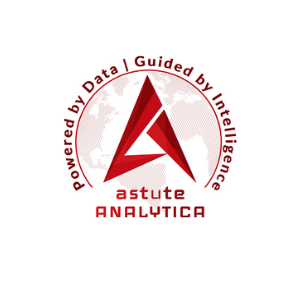Blockchain
Oracle Blockchain Platform now available as part of Everledger’s provenance tracking solution

 Reading Time: 3 minutes
Reading Time: 3 minutes
Oracle OpenWorld Singapore — Oracle’s enterprise-grade blockchain platform is now available as part of Everledger’s blockchain-based solution following a rigorous development and scale evaluation process. As part of this, Everledger, a global emerging technology enterprise leading the way in real-world applications of blockchain, assessed Oracle’s blockchain offering for its ability to provide extended product capabilities to support enhanced customer solutions.
In particular, the alignment will give Everledger users the ability to shadow blockchain transactions into a relational database, making it easier to run analytics on them. This will enable improved decision making, for example, being better able to determine how long it takes to transport gemstones from mine to the wholesaler and the retailer.
A pioneer in digital provenance tracking, Everledger’s blockchain-based platform is trusted by many industries including diamonds, coloured gemstones, fine wine and art. The ability to transparently track the provenance and lifetime journey of assets as they move across global supply chains, is especially critical for high value goods. These industries are susceptible to increased potential for theft, fraud and counterfeit – in the diamond industry alone, fraud events cost the insurance industry millions of dollars a year.
Leanne Kemp, Founder & CEO Everledger says, “With an increasing consumer consciousness and a vocal demand for transparency, our work is focused on engaging entire business ecosystems to provide consumers the ability to make fully informed purchasing decisions. It is thus key for us to enable the ease of systems interaction and provide value add to our customers.
“The inclusion of Oracle Blockchain Platform in our offering enables us to deploy more innovative products and solutions for our customers globally, in particular with improved time to market for business intelligence reporting solutions. Oracle’s comprehensive enterprise-grade offering will open our customers to realising more from our blockchain-based platform and crystalise value from the data in their own systems.”
Key elements
Some of the new capabilities of Oracle Blockchain Platform are deemed critical by Everledger in the integration of its blockchain-based platform with customers’ existing business and IT systems. As blockchain becomes an important data store in the enterprise, the Oracle Blockchain Platform enables users to capture blockchain transaction history and current state data for analytics as well as integrate it with other data sources.
“Our longstanding goal has been to help customers to manage, protect, analyze and use the world’s data for the benefit of all. Being able to work with innovative companies like Everledger is an amazing opportunity. We look forward to helping both the company itself further its innovations in tracking and tracing the authenticity of some of the world’s most precious items, but also helping those in the ecosystem link key data sources for wider benefit,” said Frank Xiong, group vice president, Blockchain Product Development, Oracle.
The key elements of note include:
Database access – Data is an integral part of blockchain. With much of the world’s data resident in Oracle systems, the use of Oracle Blockchain Platform to seamlessly link to those repositories will enable these same customers to leverage both their existing data stores and data on the Everledger blockchain.
Analytics – Oracle Blockchain Platform’s ability to connect to the rich histories stored in an organisation’s existing database means that Everledger can seamlessly enable analytics integration for highly visual interactive dashboards and reports.
Monitoring of network health, transaction rates, and other statistics, and other elements of blockchain administration/configuration, are made easier by enhanced REST APIs, which also simplify integration with existing enterprise IT tools.
Out of the box plug and play capabilities from the Oracle Blockchain Platform makes it not only easy for Everledger to get off the ground, but also easier for deployment.
Developer tools – Additionally, the query tools for Oracle Blockchain Platform link into things like smart contract support standard SQL-based ledger queries, enabling organisations to leverage the skill sets their developers already have, thereby reducing the complexity of developing chaincode and boosting performance.
SOURCE Oracle
Blockchain
Blocks & Headlines: Today in Blockchain – May 21, 2025

In an era defined by rapid innovation and regulatory shifts, today’s blockchain briefing spotlights five pivotal developments: enterprise-grade data integration, municipal crypto pilots, state-level policy hearings, AI-powered token growth, and secure communications on a public ledger. Across these stories, three key trends emerge:
-
Enterprise Adoption & Data Integration
-
Government Experimentation & Oversight
-
AI & Security Innovations in Crypto
Below, we dissect each story’s essence, unpack its broader implications, and offer opinion-driven insight for Web3 stakeholders.
1. Space and Time Joins Forces with Microsoft Fabric
Source: Chainwire / The Defiant
On May 20, 2025, Space and Time Labs (SXT)—a zero-knowledge data platform backed by Microsoft’s M12 Ventures—announced integration of its multichain index (Bitcoin, Sui, Ethereum) into Microsoft Fabric’s OneLake environment. This partnership delivers real-time, verifiable blockchain data directly within Azure, enabling developers and enterprises to build data-driven Web3 and AI applications without custom pipelines.
Opinion: Embedding verifiable on-chain data into mainstream analytics tools marks a watershed moment. As traditional enterprises crave decentralized insights, Fabric’s native access to SXT’s ZK-proven data could accelerate blockchain analytics, foster hybrid cloud-Web3 solutions, and reduce vendor lock-in. Expect more legacy tech giants to pursue similar alliances.
2. New York City Eyes Crypto for Taxes & Records
Source: DL News
Mayor Eric Adams revealed plans to form a Digital Assets Advisory Council to explore crypto-based payments for municipal services, including taxes, birth/death certificates, and land records. While specifics remain under wraps, Adams highlighted zero-knowledge proofs as a privacy-preserving tool for public documentation on distributed ledgers.
Opinion: New York’s initiative signals growing municipal appetite for blockchain beyond investments. By potentially accepting tax payments in crypto and securing vital records on-chain, NYC could pioneer use cases that blend transparency with privacy. However, pilot programs must rigorously address volatility, regulatory compliance, and digital inclusion to avoid disenfranchising underserved communities.
3. Wyoming Committee Explores Blockchain, AI & Right-to-Repair
Source: Wyoming Public Media
During its first interim meeting (May 14–15, Jackson Hole), Wyoming’s Select Committee on Blockchain, Financial Technology and Digital Innovation reviewed the state’s proposed Wyoming Stable Token—tethered 1:1 to USD—and examined AI governance and right-to-repair legislation. The Stable Token Commission anticipates a July 4 alpha launch, while lawmakers debated CBDC distinctions, tokenized real-world assets, and consumer repair rights.
Opinion: Wyoming continues to cement its reputation as a blockchain haven. Explicit carve-outs distinguishing stablecoins from CBDCs, coupled with regulatory sandboxes for AI and repair laws, underscore a holistic approach to innovation. Other states should monitor Wyoming’s alpha testing outcomes to inform balanced policy frameworks that nurture Web3 while safeguarding consumer interests.
4. AI Tokens Surge in Crypto’s New Tango
Source: The Economic Times
Himanshi Lohchab reports that AI-centric utility tokens—built to autonomously execute services like compute renting (Render), predictive analytics (SingularityNET), and data marketplaces (Ocean Protocol)—have seen market caps soar from $2.7 billion to nearly $30 billion within a year. Key players include Near Protocol’s AI modules, ICP, The Graph, and emerging AI agents that generate revenue per usage. Institutional interest from Grayscale, BlackRock, and Fidelity further validates the trend.
Opinion: The AI-blockchain convergence is no fleeting fad. AI tokens promise programmable revenue streams and decentralized toolchains, but they also introduce autonomous risk vectors—buggy smart contracts, accountability gaps, and regulatory ambiguity. Security audits, standardized interoperability protocols, and clear legal frameworks will be crucial to sustain investor confidence.
5. BSV Association Selects Binarii Labs for Secure Communications
Source: CoinGeek (via PRNewswire)
The BSV Association has designated Binarii Labs to implement BinariiDSM, an encrypted file exchange and messaging suite that logs proofs of record on the BSV blockchain. This integration ensures immutable audit trails, data resilience, and end-to-end confidentiality for enterprises seeking verifiable trust without centralized intermediaries.
Opinion: As data privacy regulations tighten globally, blockchain-anchored communication platforms like BinariiDSM offer a compelling alternative to legacy VPNs and secure email. By immutably recording metadata on-chain, organizations can demonstrate compliance, simplify audits, and deter insider threats. Look for BSV’s secure-messaging model to inspire similar offerings on other smart-contract platforms.
Conclusion: Navigating a Dynamic Blockchain Frontier
Today’s stories reaffirm that blockchain is no longer an experimental niche—it’s permeating analytics, public services, legislative agendas, tokenomics, and secure communications. To thrive:
-
Forge Strategic Alliances: Enterprises should partner with ZK and data-fabric innovators to embed blockchain insights into their analytics stacks.
-
Pilot Pragmatically: Municipalities must balance visionary crypto use cases with compliance, volatility management, and equitable access.
-
Craft Balanced Policy: States can emulate Wyoming’s sandbox approach—distinguishing stablecoins from CBDCs, while addressing AI and repair rights.
-
Secure the Autonomous Agent Era: As AI tokens multiply, enforce rigorous security audits and interoperability standards.
-
Leverage On-Chain Trust: Consider blockchain-anchored communications for immutable audit trails and enhanced data resilience.
By embracing these actions, organizations and policymakers can harness blockchain’s transformative power while mitigating emerging risks.
The post Blocks & Headlines: Today in Blockchain – May 21, 2025 appeared first on News, Events, Advertising Options.
Blockchain
Hair Transplant Market To Worth Over US$ 41.01 Billion By 2033 | Astute Analytica
Blockchain
VanEck Prepares to Launch PurposeBuilt Fund to Invest in Real-World Applications on Avalanche
-

 Blockchain Press Releases7 days ago
Blockchain Press Releases7 days agoFintica AI and Mima Wallet Announce Strategic Partnership and Launch Joint Venture, Fintica Crypto Ltd
-

 Blockchain6 days ago
Blockchain6 days agoBDM Digital Initiates Promising Dialogue with Stanford Law School in Pursuit of Strategic Partnerships in Silicon Valley
-

 Blockchain6 days ago
Blockchain6 days agoBlocks & Headlines: Today in Blockchain – May 15, 2025 (BTC’s Push, Pi Network Fund, Stablecoin Levers, JPM Pilot, OKX × Man City)
-
Blockchain6 days ago
Wen Acquisition Corp Announces the Pricing of $261,000,000 Initial Public Offering
-
Blockchain6 days ago
Mercurity Fintech’s Subsidiary Grows Cross-Border Business Advisory Services with New Asia-Pacific Healthcare Client Engagement
-

 Blockchain6 days ago
Blockchain6 days agoSaudi Arabia Loan Aggregator Market Report 2025: Retail Digital Payments Hit 70% as Tech Adoption Transforms Saudi Financial Services – Competition, Forecast & Opportunities to 2030
-

 Blockchain Press Releases7 days ago
Blockchain Press Releases7 days agoHTX Hot Listings Week 6 May 2025: Top Gainer Up 521% as Bitcoin Breaks $100K Again
-

 Blockchain5 days ago
Blockchain5 days agoBlocks & Headlines: Today in Blockchain – May 16, 2025


































